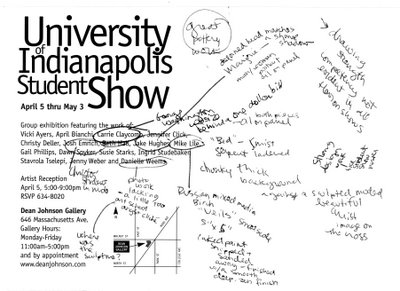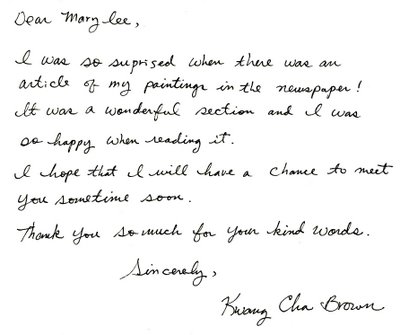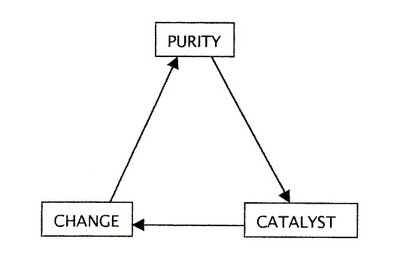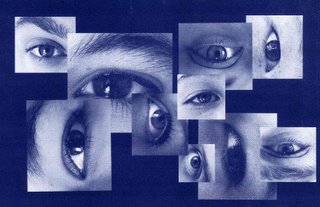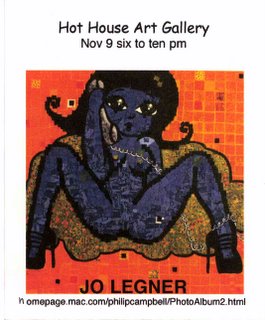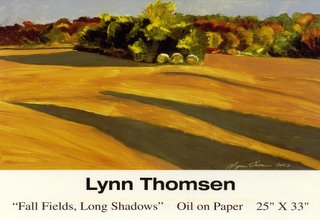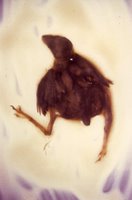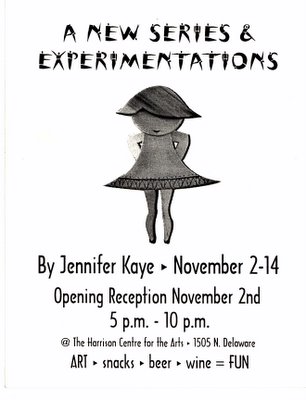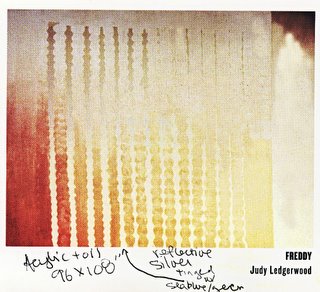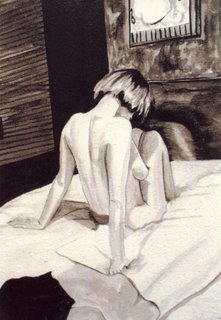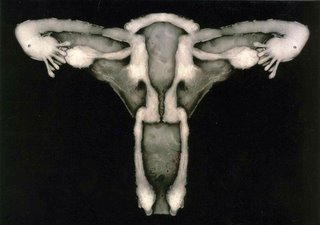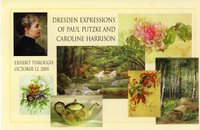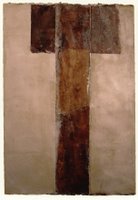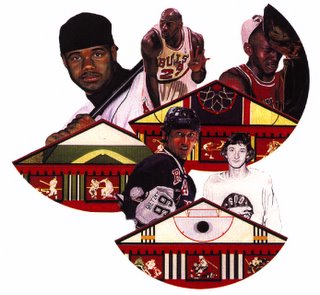
* Pictured - Greg Brown and Harry Blomme outside of Utrillo's Art Gallery. "He's become quite a good cook. He can make spaghetti taste good," Blomme said of Brown.
Harry Blomme farmed his Southern Indiana land for nearly 40 years before finding himself homeless in Indianapolis five years ago. He has a little apartment now, just big enough for his art supplies and a few modest furnishings that his new career as an artist has helped provide for him.
Cupid lured Blomme to rural Indiana from his native Toronto when he was a young man. A frenzy of love letter exchanges with a woman he met through a pen pal ad in the back of a farm journal engaged him enough to buy a bus ticket and meet her in person. "She was meant to be my wife," he says. She was African-American, from a family of traveling Southern Indiana Pentecostal preachers. He was second generation Flemish-Canadian and Catholic.
They had a love- and faith-based marriage, followed the preaching circuit as far north as Detroit and, meanwhile, farmed their land. "You gotta' grease and oil all your tractors, engines, make sure you got enough gas and carry gas with you ... make sure you've got enough seed with you. And plowing 40 acres is a chore," Blomme says of his former Evansville farm.
Tragedy overtook Blomme when one of his two sons was killed in a convenience store robbery. Then Blomme's wife died. Not long after that, he lost control of his farm and was left destitute.
Deeply spiritual and innately artistic, Blomme found comfort through painting and drawing. "I always knew I could paint, even when I was a little kid," he says over a boombox playing Madame Butterfly in his small, square, immaculately white and tidy one-bedroom home. Because sketch paper was not an available option while Blomme was living on the streets, his pieces were customarily rendered on dumpster finds like the backs of TVs. Luckily for him, people liked and wanted to buy this work that brought him so much personal salvation.
Delicately-labored strokes
Utrillo's Art Gallery, owned by Greg Brown, is where Blomme's landscape, still life and figurative works are currently housed. "He's always advising me and he's always offering me coffee, tea or whatever," Blomme says of Brown.
Blomme's creativity is encouraged by Brown, who occasionally outfits him with painting materials and recovered frames.
Though some are quick to classify Blomme's work as naive, he was formally trained in visual art at Danforth Technical School in Toronto. They "taught all sorts of arts - anything you wanted," Blomme recalls, adding that anatomy was his favorite class. He recalls the naked female models. "Us youngsters, just growing up, we loved that stuff." And as a result, Blomme has a wonderful sense of the human form without much of the proportional awkwardness that can plague even the most seasoned artists.
His knowledge of art and technique is hardly unsophisticated. "I think I"m a little haphazard the way I paint," he says of his delicately-labored strokes. "Sometimes you're just filling a space with color because something else was supposed to have gone there. Ninety percent of any painting is the actual proportion and drawing of it. If you can draw it up good, the painting part is secondary." Ten percent is lighting, Blomme reasons. "The lighting is the hardest thing to conquer. Incidental lighting - it might be just glaring in it; a spot on the street, or in through a window and onto a floor or just a slight glare off the side of a wall." Light is key in many of his dimly colored expressionistic works.
"You get so engrossed in a painting, you talk to yourself about it. I find myself painting in my sleep. When you come to dream about it, you have to pay attention to it. You can get hung up on a painting and lose your perspective in it. You really have to go away from it and put it to the side and then come back and look at it. Color-wise, the proportion of it, figure-wise or whatever, you have to stand back from everything." Blomme says he paints compulsively while sitting on his green floral sheet-covered twin bed, next to a sheet-covered table and sheet-covered overstuffed chair.
"I like to paint anything that suits my style," except religious scenes or images of Christ. "As far as actually trying to paint the likeness of what He looked like, I don't think it"s possible for any artist. It's a big responsibility for an artist. It's supposed to be a surprise anyway."
National Geographic serves as Bloome's image source when he can"t draw from life. "I do a lot of sketchin' everywhere I go. I was drawing people at the bus station. Constantly doing it made me learn how to intone the colors and shading, and handling the pencils and charcoal."
This artistic urge kept Blomme's mind active and content when he was homeless.
Redeeming reality
Blomme met Julia Carson during a homeless church service at Christ Church Cathedral and sketched her. The resulting portrait now resides in her Washington, D.C., office. Some of Blomme's other honors include a mural at Catholic Social Services and a commission for the homeless memorial service held annually at Christ Church Cathedral. He's taught art at Holy Family Transitional Housing in Fountain Square to children and adults. ""Mommy, that's the artist man." They called me "artist man,"" he recalls. "With a child you can practically mold them and inspire - give them inspiration when they're young. They know if you're teaching them right." He's exhibited at IPALCO's Crystal Gallery, the Governor's Mansion and was the inspiration for the April Show, an annual art show comprised of artists who have overcome obstacles that most of us will never have to face - like mental illness and homelessness.
David Hittle of Lutheran Family Services met Blomme while working as a case manager for a homeless transitional housing effort, Homeless Initiative Project. Blomme's case manager, Bill Bickel, current director of Holy Family Shelter Services, introduced the two. Hittle, who describes Blomme as "one of the swellest guys I know," was motivated to open up his downtown turn-of the-century home for the April Show exhibition featuring Blomme"s artwork because he realized there were no other venue opportunities for him. Greg Brown loved Hittle"s idea and introduced him to two other artists from similar backgrounds.
Bickel and Hittle have ventured outside of their social work worlds to effectively improve lives by encouraging visual arts. They have confirmed the redeeming reality of how the arts can actually restore lives like Harry Blomme"s, whose paintings renewed his life and rescued him from an uncertain future. This work has enabled him to start concentrating on other important life matters like finding a good church: "One with good music," he stresses. And establishing himself as the artist he is. "I would love to get my name out there and be known as a good artist." - Mary Lee Pappas






